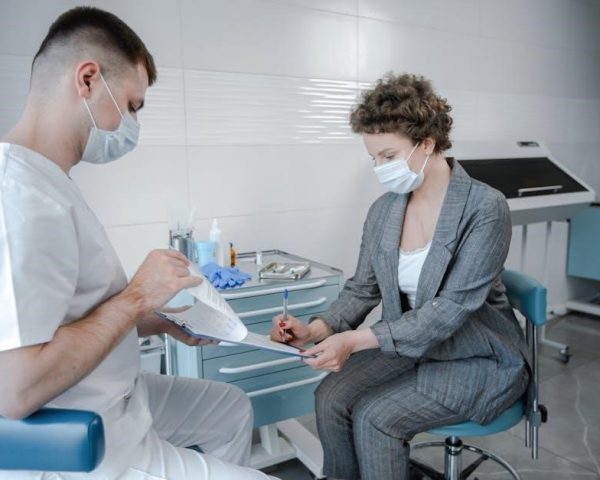Posterior Tibialis Tendon Dysfunction (PTTD) Exercises⁚ A Comprehensive Guide

Posterior tibial tendon dysfunction (PTTD) is a common condition that affects the tendon that runs along the inside of the ankle. This tendon helps to support the arch of the foot and allows you to point your toes and turn your foot inward. When this tendon becomes weakened or inflamed, it can cause pain, swelling, and instability in the foot and ankle. This comprehensive guide will explore PTTD exercises, including strengthening, flexibility, and proprioception exercises, to help you manage this condition and improve your overall well-being.

Introduction
Posterior tibial tendon dysfunction (PTTD) is a prevalent condition that often affects individuals in middle age. It typically involves the tendon running along the inside of the ankle, which plays a crucial role in supporting the arch of the foot and facilitating movements like pointing the toes and turning the foot inward. When this tendon experiences weakness or inflammation, it can lead to discomfort, swelling, and instability in the foot and ankle. The pain associated with PTTD can range from mild to severe, and it may worsen with activity. This condition can significantly impact daily activities, making it challenging to walk, stand, or participate in physical activities. While PTTD can be a frustrating condition, there are effective treatment options available, including exercise. This comprehensive guide will delve into the world of PTTD exercises, providing a detailed overview of various exercises that can help strengthen the tibialis posterior tendon, improve flexibility, and enhance proprioception. By incorporating these exercises into your routine, you can effectively manage PTTD symptoms, improve your foot and ankle function, and regain your ability to participate in the activities you enjoy.
What is PTTD?
Posterior tibial tendon dysfunction (PTTD) is a condition that affects the posterior tibial tendon, a vital structure located on the inside of the ankle. This tendon plays a crucial role in supporting the arch of the foot and enabling various foot movements, including pointing the toes and turning the foot inward. When the posterior tibial tendon becomes weakened or inflamed, it can lead to a range of symptoms, including pain, swelling, and instability in the foot and ankle. PTTD is often characterized by a gradual onset of pain, which may initially be mild but can worsen over time. The pain is typically located on the inside of the ankle, near the arch of the foot. As the condition progresses, the arch of the foot may flatten, leading to a condition known as flatfoot. This flattening of the arch can further exacerbate the pain and instability. PTTD is a relatively common condition, particularly affecting middle-aged adults, although it can occur at any age. The exact cause of PTTD is not fully understood, but it is believed to be related to a combination of factors, including overuse, repetitive strain, obesity, and underlying medical conditions such as diabetes.
Causes of PTTD
The exact cause of posterior tibial tendon dysfunction (PTTD) is not fully understood, but it is believed to be a combination of factors. These factors can be broadly categorized into intrinsic and extrinsic causes. Intrinsic factors refer to those related to the individual’s own body, while extrinsic factors are those related to external influences.
Intrinsic factors contributing to PTTD include age, genetics, and underlying medical conditions. As we age, our tendons naturally become less elastic and more prone to injury. Certain genetic predispositions can also increase the risk of developing PTTD. Additionally, individuals with conditions such as diabetes, rheumatoid arthritis, and obesity have a higher risk of developing PTTD.
Extrinsic factors contributing to PTTD include overuse, repetitive strain, and improper footwear. Activities that involve repetitive stress on the ankle, such as running, dancing, and standing for prolonged periods, can increase the risk of PTTD. Wearing shoes that do not provide adequate support for the arch of the foot can also contribute to the development of this condition.
Understanding the various factors that contribute to PTTD is crucial for effective prevention and management. By identifying and addressing these factors, individuals can minimize their risk of developing PTTD and improve their overall foot and ankle health.
Symptoms of PTTD
The symptoms of posterior tibial tendon dysfunction (PTTD) can vary depending on the severity of the condition. In the early stages, symptoms may be mild and intermittent, while in later stages, they can become more severe and persistent.
A common initial symptom is pain along the inside of the ankle, which may worsen after activity or prolonged standing. This pain can radiate down to the arch of the foot, making it difficult to walk or stand for long periods. Swelling around the ankle is also a common symptom, particularly after exercise or activity.
As the condition progresses, the arch of the foot may begin to flatten, leading to a condition called flatfoot. This can result in a feeling of instability in the ankle, making it difficult to balance and walk normally. The foot may also turn outward, causing pain and discomfort.
Other symptoms that may occur include⁚
- Stiffness in the ankle
- Weakness in the foot
- Difficulty with walking or running
- A feeling of tightness or burning in the ankle
If you are experiencing any of these symptoms, it is important to consult with a healthcare professional for a proper diagnosis and treatment plan.
Diagnosis of PTTD
Diagnosing posterior tibial tendon dysfunction (PTTD) typically involves a combination of a physical examination, medical history, and imaging studies. A healthcare professional will assess your symptoms, examine your ankle and foot, and inquire about your medical history, including any previous injuries or medical conditions.
During the physical examination, the healthcare professional will assess your range of motion, strength, and stability of the ankle and foot. They may also check for tenderness along the course of the posterior tibial tendon.
In addition to a physical examination, imaging studies may be used to confirm the diagnosis and assess the severity of PTTD. X-rays can help determine the extent of flatfoot deformity and rule out other conditions, such as fractures or arthritis. An MRI scan can provide more detailed images of the soft tissues, including the tendon itself, and can help identify tendon tears or inflammation.
A healthcare professional will consider the results of the physical examination and imaging studies, as well as your medical history, to determine the best course of treatment for your PTTD. Early diagnosis and treatment are essential for optimal outcomes.
Treatment Options for PTTD
Treatment for posterior tibial tendon dysfunction (PTTD) typically involves a multi-faceted approach that aims to reduce pain, inflammation, and improve the function of the tendon. The specific treatment plan will vary depending on the severity of the condition and the individual’s needs.
Conservative treatment options are often the first line of defense for PTTD. These may include⁚
– Rest⁚ Avoiding activities that aggravate the pain and allowing the tendon to rest can help reduce inflammation.
– Ice⁚ Applying ice to the affected area for 15-20 minutes at a time, several times a day, can help reduce swelling and pain.
– Compression⁚ Using a compression bandage or support sock can help reduce swelling and provide stability to the ankle.
– Elevation⁚ Elevating the foot above the heart can help reduce swelling.
– Nonsteroidal anti-inflammatory drugs (NSAIDs)⁚ Over-the-counter medications like ibuprofen or naproxen can help reduce pain and inflammation.
– Orthotics⁚ Custom-made or over-the-counter arch supports can help improve foot alignment and reduce stress on the posterior tibial tendon.
– Physical therapy⁚ A physical therapist can provide exercises to strengthen the muscles surrounding the ankle, improve flexibility, and enhance proprioception (awareness of the body’s position in space).
If conservative treatment options are unsuccessful, surgical intervention may be considered. This might be necessary for severe cases of PTTD, such as tendon tears or significant flatfoot deformity. Surgery aims to repair or reconstruct the tendon and restore proper foot alignment.
PTTD Exercises for Strengthening
Strengthening exercises play a crucial role in managing posterior tibial tendon dysfunction (PTTD) by improving the strength and stability of the muscles that support the ankle and foot. These exercises aim to target the tibialis posterior muscle, which is responsible for inverting the foot (turning it inward) and supporting the arch.
Here are some common strengthening exercises for PTTD⁚
– Heel Raises⁚ Stand with your feet hip-width apart and your toes pointing slightly outward. Slowly lift up onto your toes, squeezing your calf muscles. Hold for a few seconds and then slowly lower back down. Repeat for 10-15 repetitions, 2-3 times a day.
– Toe Curls⁚ Sit with your feet flat on the floor. Curl your toes up towards your shins, as if you were trying to grab something with your toes. Hold for a few seconds and then slowly relax. Repeat for 10-15 repetitions, 2-3 times a day.
– Ankle Inversion with Resistance Band⁚ Sit with your feet flat on the floor. Loop a resistance band around your toes and hold the ends of the band in your hands. Slowly turn your foot inward, against the resistance of the band. Hold for a few seconds and then slowly return to the starting position. Repeat for 10-15 repetitions, 2-3 times a day.
– Calf Stretch⁚ Stand facing a wall with your feet shoulder-width apart. Lean forward, keeping your back straight and your heels on the ground, until you feel a stretch in your calves. Hold for 30 seconds and repeat 2-3 times a day.
It’s important to start slowly and gradually increase the intensity and repetitions as you get stronger. If you experience any pain, stop the exercise and consult with a physical therapist or healthcare professional.
PTTD Exercises for Flexibility
Flexibility exercises are an essential component of managing posterior tibial tendon dysfunction (PTTD). They help improve the range of motion in the ankle and foot, reduce muscle tightness, and promote better blood flow to the affected area; By improving flexibility, these exercises can alleviate pain, reduce stiffness, and enhance overall function.
Here are some common flexibility exercises for PTTD⁚
– Gastrocnemius Stretch⁚ Stand facing a wall with your feet shoulder-width apart. Lean forward, keeping your back straight and your heels on the ground, until you feel a stretch in your calves. Hold for 30 seconds and repeat 2-3 times a day.
– Soleus Stretch⁚ Stand with your feet shoulder-width apart and your toes pointing slightly outward. Bend your knees slightly and lean forward, keeping your back straight. You should feel a stretch in your lower calf muscles. Hold for 30 seconds and repeat 2-3 times a day.
– Towel Stretch⁚ Sit on the floor with your legs extended. Loop a towel around the toes of your affected foot and gently pull the towel towards you. Hold for 30 seconds and repeat 2-3 times a day.
– Foot Mobilization⁚ Sit with your feet flat on the floor. Use your hands to gently move your foot in a circular motion, both clockwise and counterclockwise. This helps to improve joint mobility and reduce stiffness.
It’s important to perform flexibility exercises gently and avoid pushing yourself beyond your comfort level. If you experience any pain, stop the exercise and consult with a physical therapist or healthcare professional.
PTTD Exercises for Proprioception
Proprioception refers to the body’s ability to sense its position and movement in space. Exercises that improve proprioception are crucial for managing PTTD as they enhance the stability and coordination of the ankle and foot. These exercises help the brain better understand the position of the foot and ankle, leading to improved balance and reduced risk of falls.
Here are some common proprioception exercises for PTTD⁚
– Single-Leg Stance⁚ Stand on one leg with your knees slightly bent; Maintain balance for as long as possible, gradually increasing the time as you progress. You can also add variations like closing your eyes or standing on an unstable surface like a foam pad.
– Heel Raises⁚ Stand with your feet shoulder-width apart. Lift your heels off the ground, engaging your calf muscles. Hold for a few seconds and repeat several times. This exercise can be progressed by performing it on a slightly elevated surface.
– Ankle Circles⁚ Sit in a chair with your feet flat on the ground. Slowly rotate your ankle in a circular motion, both clockwise and counterclockwise. This helps improve ankle mobility and proprioception.
– Balance Board⁚ Stand on a balance board or wobble board and try to maintain your balance. You can progress by adding variations like closing your eyes or reaching for objects.
Remember to start slowly and gradually increase the difficulty of these exercises as your balance improves. If you experience any dizziness or instability, stop the exercise and consult with a physical therapist or healthcare professional.


